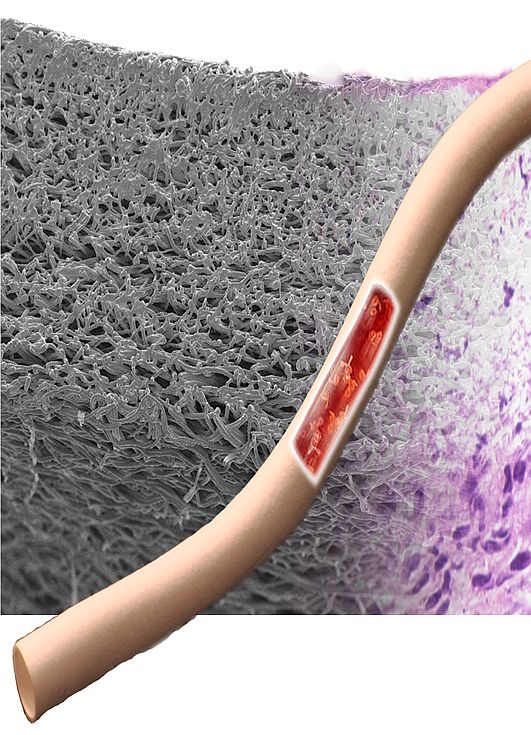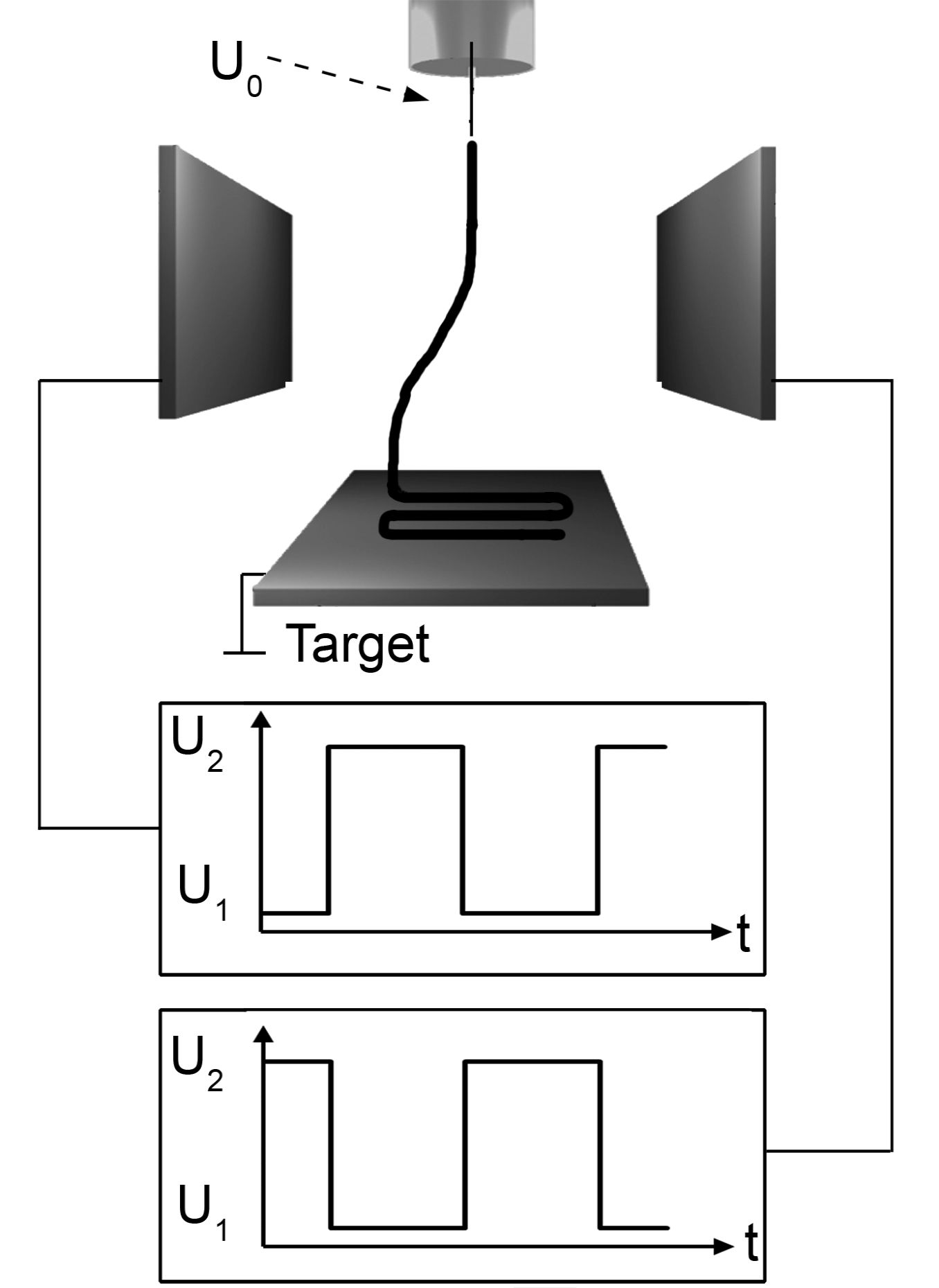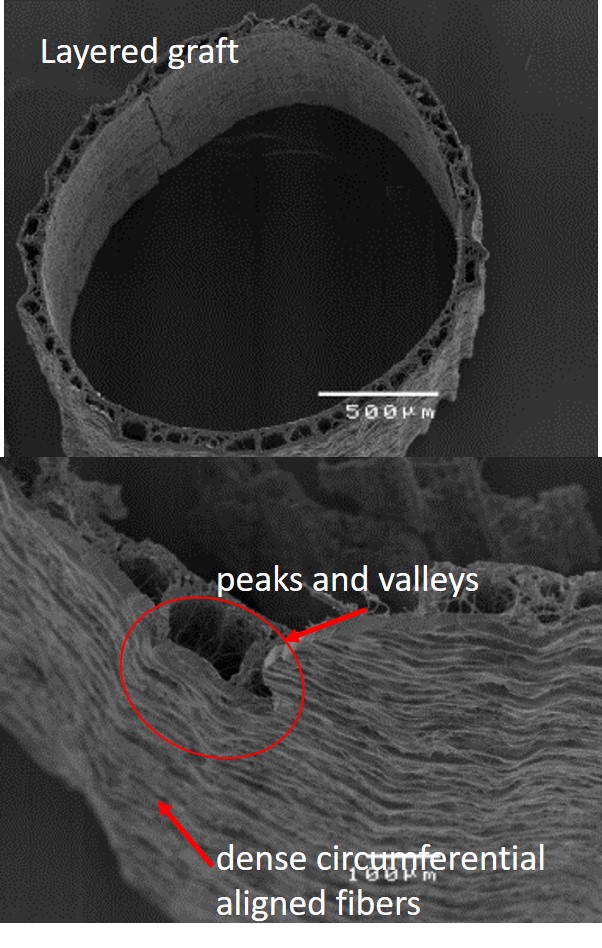Electrospinning of nano- and micro-structured scaffolds
Development of small diameter vascular grafts

During the last decades, different approaches and biomaterials have been applied to solve problems associated with small diameter grafts, notably thrombogenicity, biomechanical mismatch with the host vessel and intimal hyperplasia. Together with the Division of Biomedical Research, MUV and the Ludwig Boltzmann Institute for Cardiovascular Research we are working on the development of appropriate electrospun vascular grafts.
Steering of the electrospinning jet

Electrospinning looks like a simple method, which, however, depends on many parameters. Due to some inherent instabilities, like the electrospinning jet’s bending and the buckling instabilities the formation of straight and aligned fibers is usually impaired. Therefore, so far most of the nanofiber fabrics manufactured by electrospinning are unstructured non-wovens. However, a control of the deposited fibers is therefore the goal of our efforts. With our approach we try to narrow the bending instability and control the jet directly with an additional electric field.
Electrospinning of biodegradable and biostable polymers for various scaffolds

Scaffolds are used to provide a structurally environment for tissue regeneration. Such a scaffold serves as an artificial extracellular matrix. Biostable polymers have the advantage that they preserve their mechanical stability but in turn can give rise to inflammation. Considerable research is currently focused on designing biodegradable scaffolds, which are intended to serve only temporary until a fully functional remodeled structure can overtake its function again. Scaffolds for bridging nerve defects, in-vitro test models and vascular applications are electrospun in our cleanroom facilities.
